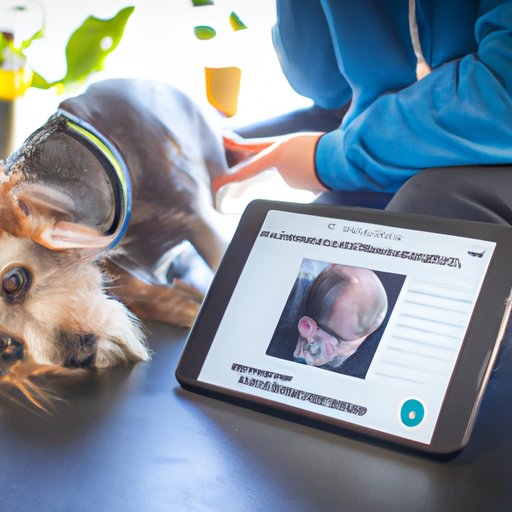“`markdown
How to Treat Vestibular Disease in Dogs
As a caregiver, you strive to keep your furry friends healthy and happy. When a pet falls ill, it can be a distressing time for both you and your four-legged companion. Understanding the condition and knowing how to properly care for your pet can make all the difference. Today, let’s delve into the world of canine health, focusing on a condition known as vestibular disease.
1. Understanding Vestibular Disease
Vestibular disease is a condition that affects your dog’s balance. It’s as if your pet has suddenly lost his sense of equilibrium, causing them to stumble, tilt their head, or even fall over. It is most common in older dogs, but it can affect dogs of any age.
The vestibular system is responsible for maintaining normal balance. When this system is disrupted, symptoms of vestibular disease appear. But fear not, with your tender, loving care and the right treatment approach, your dog can get back on his feet in no time.
2. Recognizing the Symptoms
Spotting the signs of vestibular disease early can help your pet get the treatment he needs faster. Typical symptoms include:
- Loss of balance
- Head tilting to one side
- Rapid, uncontrolled eye movements
- Nausea or vomiting
- Difficulty standing or walking
If your dog displays any of these symptoms, it’s crucial to consult with a veterinarian immediately.
3. Treatments and Therapies
Once a vet confirms a diagnosis of vestibular disease, the treatment will depend on the underlying cause. Here are some common treatments:
- Medications: To manage symptoms and treat any underlying infections or conditions.
- Physical Therapy: To help your dog regain strength and balance.
- Home Care: Providing a safe and comfortable environment for your dog to recover.
| Treatment Method | Purpose |
|---|---|
| Medications | Manage symptoms, treat underlying conditions |
| Physical Therapy | Regain strength and balance |
| Home Care | Provide a safe, comfortable recovery environment |
4. Home Care Tips
Part of your role as a caregiver is providing comfort and care at home. Here are some tips to help your dog during recovery:
- Keep your dog in a well-padded area to prevent injury from falls.
- Help your dog move around, especially when going outside for bathroom breaks.
- Provide plenty of water and nutritious food.
5. Preventative Measures
While some causes of vestibular disease cannot be prevented, maintaining your dog’s overall health can reduce the risk. Regular veterinary check-ups, a balanced diet, and plenty of exercises are the keys to a healthy, happy dog.
FAQ
Q: Is vestibular disease in dogs life-threatening?
A: Generally, no. Although symptoms can be severe, most dogs recover with proper treatment and care.
Q: How long does it take for a dog to recover from vestibular disease?
A: Recovery time varies, but many dogs show improvement within 72 hours and make a full recovery within 2-3 weeks.
Q: Can my dog catch vestibular disease from another dog?
A: No, vestibular disease is not contagious.
Remember, as a caregiver, your pet relies on you for their health and wellbeing. Knowledge is the first step towards providing the best care possible.
“`



